Autonomous navigation, two-man remote crew: Singapore navy's unmanned surface vessels begin patrols
The Republic of Singapore Navy has acquired four Maritime Security Unmanned Surface Vessels - with three delivered by the end of 2024.
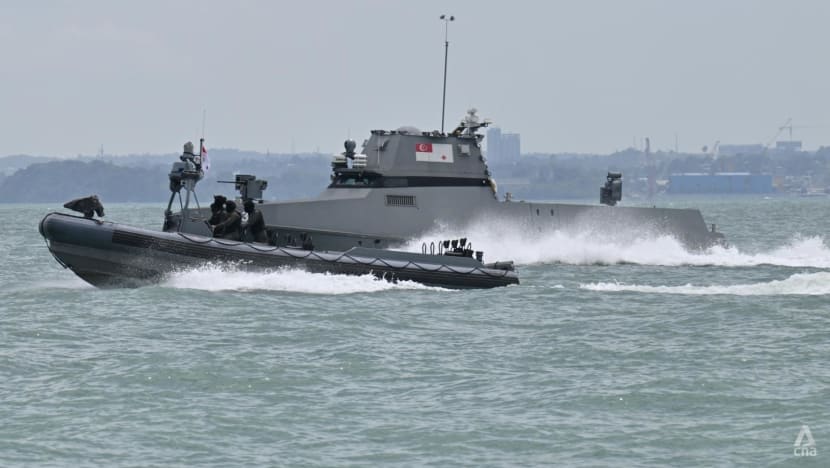
A Republic of Singapore Navy’s Maritime Security Unmanned Surface Vessel (MARSEC USV) catching a "suspicious vessel" during a stimulated maritime threat scenario on Feb 4, 2025. (Photo: CNA/Jeremy Long)

This audio is generated by an AI tool.
SINGAPORE: "Stop, Stop, Stop". A warning rang out from an unmanned surface vessel as it sailed towards and intercepted a "suspicious" boat in Singapore waters.
The audio warning, translated from text to speech, is part of the vessel's calibrated response to situations at sea.
Known as Maritime Security Unmanned Surface Vessels or MARSEC USVs, these Republic of Singapore Navy (RSN) assets began operational patrols in January.
When required, these assets will also investigate and interdict suspicious vessels, the Ministry of Defence (MINDEF) said in a fact sheet on Tuesday (Feb 4).
Members of the media got to experience sailing on a USV while witnessing how it reacts to such vessels during a simulated maritime threat scenario near Changi Naval Base in Tanah Merah.
Each vessel is 16.9m-long and can travel at a speed of more than 25 knots or about 50kmh. It also has an endurance level - the maximum time a vessel can operate without needing supplies or maintenance - of more than 36 hours.
It is able to conduct autonomous navigation, with the help of a radar and 360-degree camera.
The USV also has a remote weapon system that can be used to fire warning or disabling shots when necessary. However, this system is not autonomous.
Directing the weapon system is an action that would require a "man in the loop" as it involves "deliberate human decision", said commanding officer for the USV squadron Lieutenant Colonel Tan Kailing.
Speaking to reporters, Colonel (COL) Thung Yee Meng, commander of the sixth Flotilla fleet, said the MARSEC USVs are "a first" for the Singapore navy in terms of the autonomy they incorporate.
He also said that the navy's development in unmanned technology underscores its commitment to innovation to meet operational efficiencies.
The RSN has acquired four MARSEC USVs and has been receiving them progressively. Three of the vessels had been delivered by the end of 2024, he added.
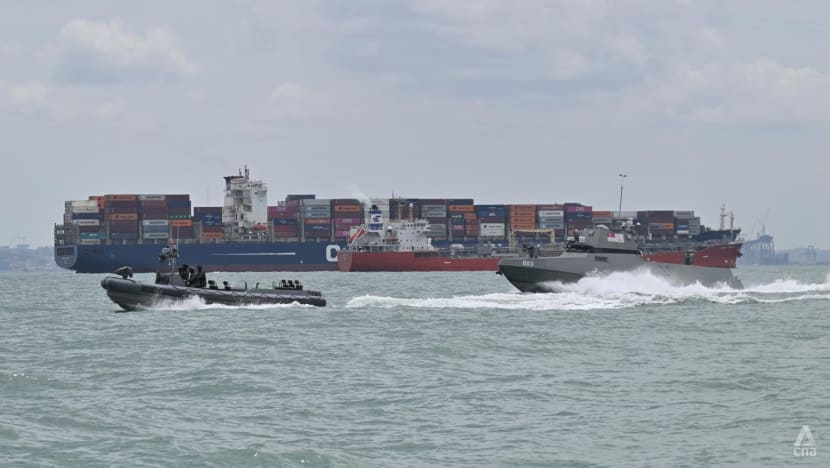

The vessels, alongside manned ships such as the RSN’s Littoral Mission Vessels (LMVs), add another layer of surveillance and operational response to Singapore's maritime security, said MINDEF.
The USVs also enhance the navy's ability to monitor and respond to situations at sea.
By providing "more persistent coverage" in the Singapore Strait, the unmanned surface vessels allow other warships like the LMVs to be deployed for more complex missions, and at further ranges from Singapore, the Defence Ministry added.
The MARSEC USVs also allow the navy to remotely and safely conduct potentially risky missions at sea.
The vessel can be operated by just a two-man crew. In comparison, the Independence-class LMVs, while designed to operate with a lean team, require a base crew of 23 personnel.
"The USV is designed to be operated and maintained by National Servicemen. In its steady state, the USV teams, consisting of operators and engineering support, will mainly be made up of Full-time and Operationally Ready National Servicemen, complemented by a small number of regular servicemen," said MINDEF.
The ministry added that the user-centric design of the unmanned systems mission control allows operators to quickly plan and execute patrol profiles, track vessels of interest and remotely warn, question and investigate boats and ships at sea.
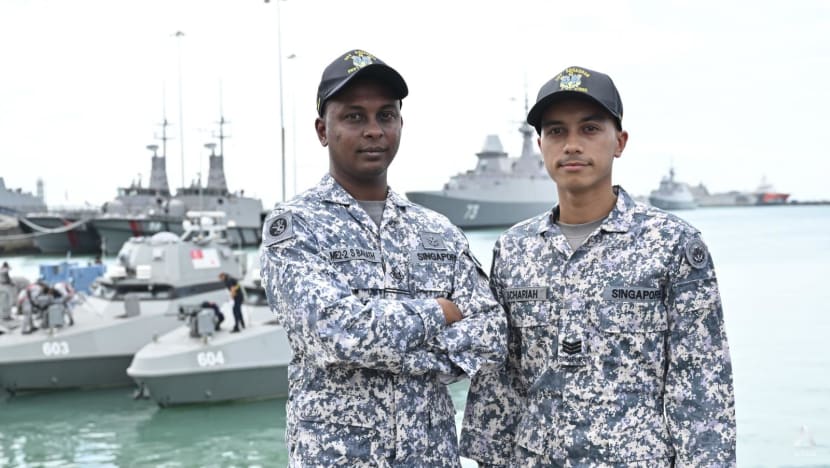
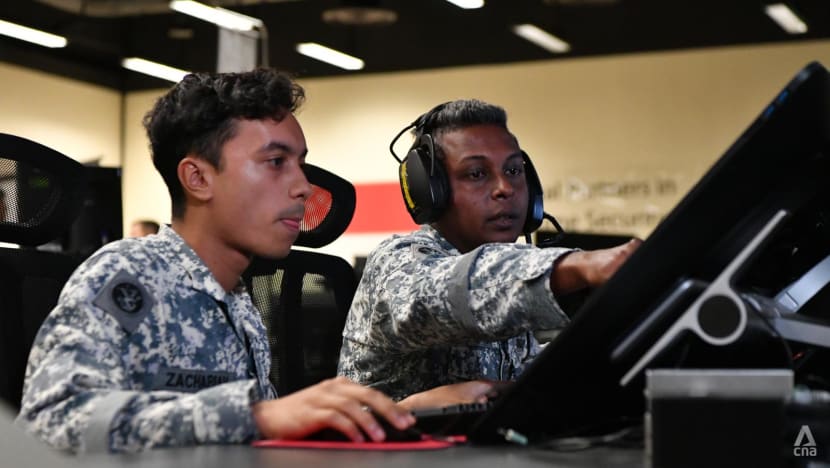
Third Sergeant (3SG) Zachariah Santa Maria is among a team of two that operates the MARSEC USV.
He told reporters on Tuesday that the training process took around two to three months, during which he also went through specialised training and completed a USV qualification course.
The course taught him how to use the unmanned systems interface to control the craft as well as interpret the data and values.
The NSF said his role involves ensuring that the craft was in operational condition and ready for deployment.
"We are a lean, two-man team, so teamwork and communication is very important between the two of us," he added.
COL Thung told reporters that the RSN "will always have to contend" with the manpower realities that come with being a navy of a small country like Singapore.
Hence, with just a team of two, the MARSEC USVs are able to take on similar tasks as those that are manned, allowing the navy to overcome manpower constraints.
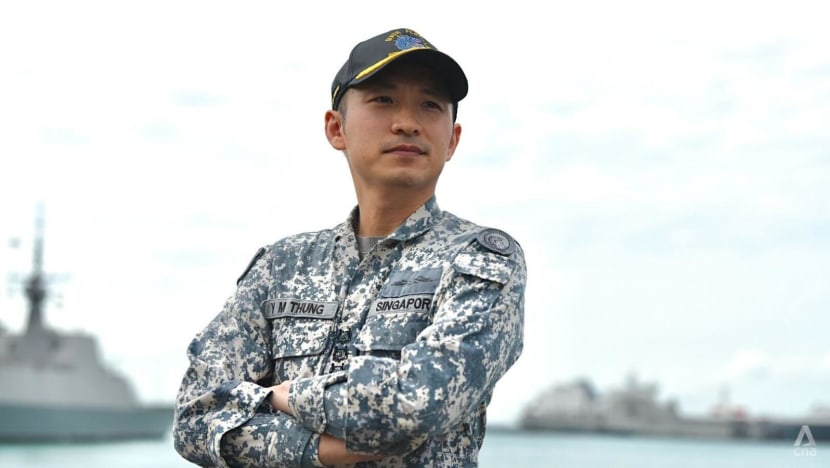
AUTONOMOUS NAVIGATION SYSTEMS
Designed and developed in partnership with the Defence Science & Technology Agency (DSTA) and Defence Science Organisation (DSO) National Laboratories, the unmanned surface vessels make use of latest technologies to enable autonomous navigation operations in a congested maritime environment.
The vessels are equipped with autonomous navigation systems, including an algorithm called collision detection and collision avoidance.
This allows the vessel to navigate the busy traffic in the Singapore Strait - where more than 1,000 vessels travel through daily - and cope with constantly changing environmental conditions at sea, said MINDEF.
The navigation system automates the decision-making process to avoid collisions, enabling the USV to assess and respond to maritime traffic situations in a predictable manner, similar to that of a manned vessel.
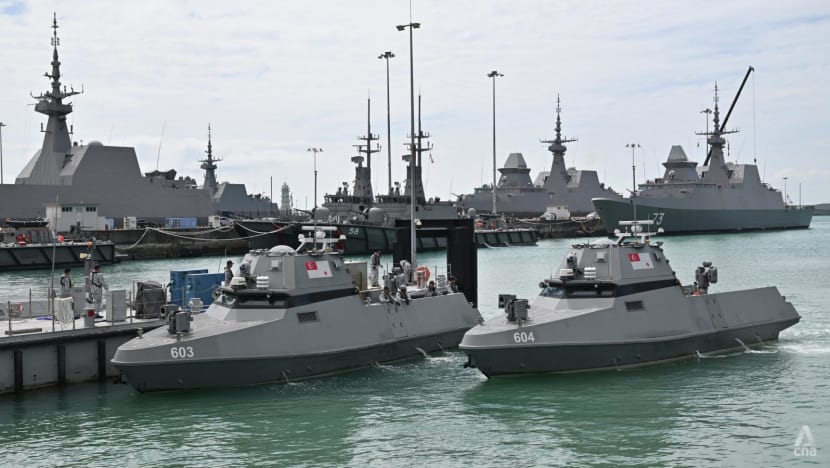
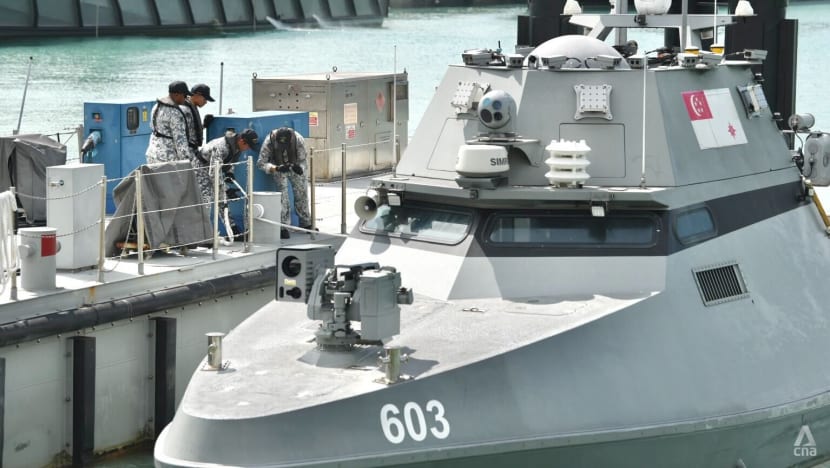
Both the USV and its autonomous navigation system were tested "extensively" through a comprehensive approach that had been benchmarked against industry best practices, said MINDEF.
The collision detection and collision avoidance algorithm was put through extensive lab testing with real-time traffic data, and completed more than 12 million km of simulated distance with no collisions. This is equivalent to 26 years of real-world testing.
The USVs also clocked more than 1,000 hours of autonomous operations at sea, with zero need for human intervention, said MINDEF.
The vessels were "stress-tested" in key safety factors, such as for the detection of small, low-lying vessels, ability to react to special situations such as obscured boats or ships emerging from anchorages and scenarios of automatic system failure.
"The RSN will continue progressive experimentation to enhance the MARSEC USVs for a wider range of maritime security operations in Singapore’s congested waters," said MINDEF.

















